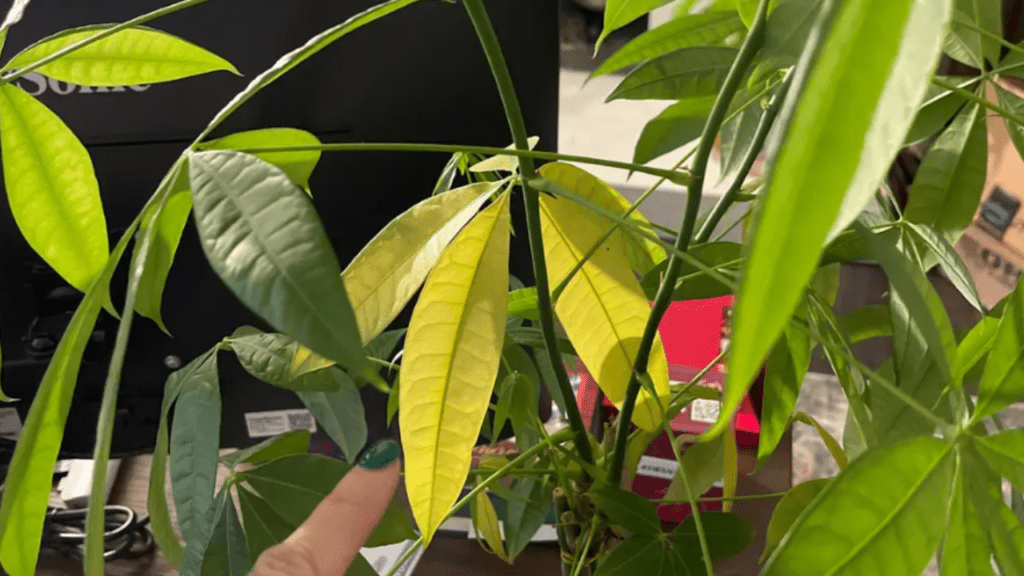
Money Tree Leaves Turning Yellow: Causes, Fixes, and Care Tips
Money trees, also known as Pachira aquatica, are popular houseplants with braided trunks and attractive foliage. If you notice the money tree leaves turning yellow, it could indicate that your plant is not in the best condition.
Understanding the causes of yellowing leaves and how to properly care for a money tree is essential for maintaining its health and beauty.
In this article, we will explore the common causes of yellowing leaves on money trees, provide fixes for each issue, and offer essential care tips to help your money tree thrive. By following these guidelines, you can ensure that your money tree remains vibrant and healthy.
Table of Contents
ToggleUnderstanding Money Trees
Brief description of money trees and their popular use as indoor plants
Money trees, also known as Pachira aquatica, are popular indoor plants with braided trunks and lush, green foliage. They are believed to bring good luck and prosperity, which is why they are commonly used as decorative plants in homes and offices. Money trees are relatively low maintenance and can thrive in a variety of light conditions, making them a popular choice for indoor plant enthusiasts.
The causes of money tree leaves turning yellow, but common issues include overwatering, underwatering, inadequate light, or nutrient deficiencies. If you notice your money tree leaves turning yellow, it’s important to address the underlying issue to ensure the plant’s health and vitality.
Providing proper care for your money tree, including adequate watering, appropriate light exposure, and regular fertilization, can help prevent yellowing leaves and promote overall plant health. With the right care and attention, your money tree can continue to thrive and bring a touch of greenery and prosperity to your indoor space.
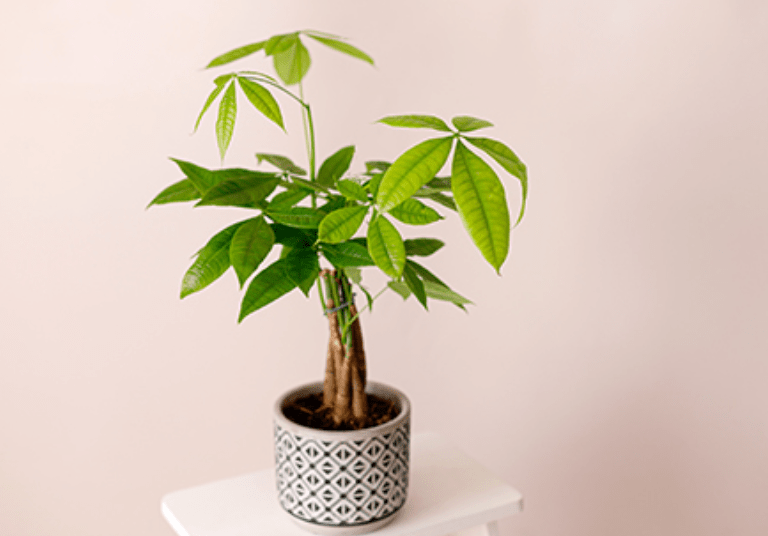
Characteristics of healthy money tree leaves and typical growth patterns
Healthy money tree leaves are generally a vibrant, glossy green color with no signs of discoloration, spots, or yellowing. The leaves should be plump and turgid, with no wilting or drooping. If the leaves are pale or yellow, it may indicate a problem with watering or light exposure. Money trees typically grow new leaves in the spring and summer months, with growth slowing down during the fall and winter. As the tree grows, it may shed older leaves to make way for new growth. It’s important to monitor the growth patterns of your money tree and adjust care as needed to ensure the plant remains healthy and vibrant. With proper care and attention, money trees can thrive and add a touch of nature to any indoor space.
Common Causes of Yellowing Leaves
Overwatering: Detailed explanation of how excessive moisture affects the plant
Overwatering can have detrimental effects on a money tree. When a plant is overwatered, the roots can become waterlogged, leading to root rot and decreased oxygen uptake. This can cause the leaves to yellow and eventually fall off. Overwatering also creates a conducive environment for fungal and bacterial diseases to develop, further impacting the health of the plant. To prevent overwatering, it’s important to ensure that the soil has proper drainage and to water the plant only when the top inch of soil is dry. Additionally, using a pot with drainage holes can help prevent water from accumulating at the bottom and causing root rot. By carefully monitoring the watering schedule and providing proper drainage, you can help your money tree stay healthy and vibrant.
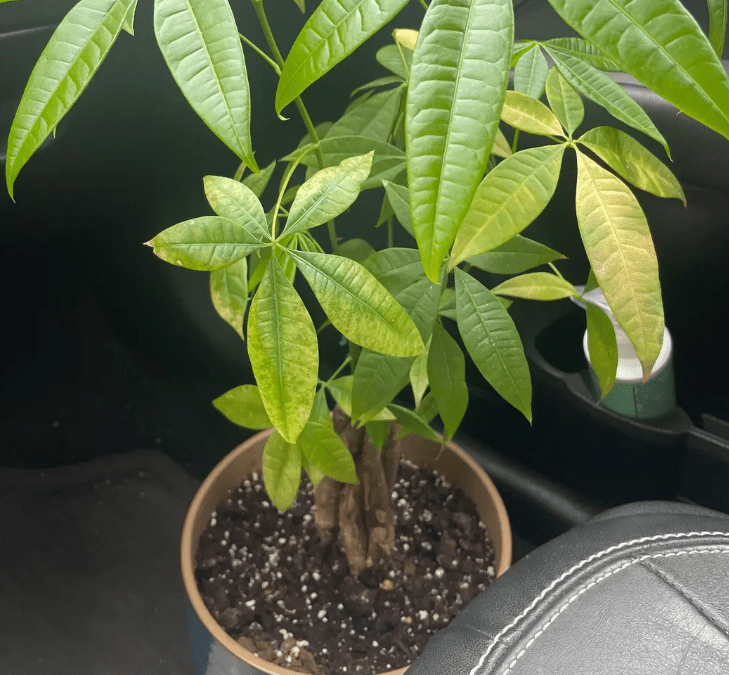
Underwatering: Effects of insufficient water intake on leaf health
Insufficient water intake can have detrimental effects on the health of plant leaves. When a plant is not receiving enough water, the leaves may start to wilt, turn yellow, or become dry and crispy. This is because water is essential for the process of photosynthesis, which is how plants create their food. Without enough water, the plant cannot produce enough energy to support healthy leaf growth. In addition, inadequate water intake can also lead to stunted growth and overall poor health for the plant. It’s important to monitor your plant’s water needs and provide adequate hydration to ensure the health and vitality of your plant’s leaves.
Lighting Issues: Impact of inadequate or excessive light exposure on foliage
The impact of inadequate or excessive light exposure on foliage can have significant effects on the health and growth of your plants. Insufficient light can lead to stunted growth, pale leaves, and overall weak and unhealthy foliage. On the other hand, excessive light exposure can cause sunburn, wilting, and scorched leaves. It’s important to find the right balance of light for your plants to thrive. Consider the natural light conditions in your home and position your plants accordingly. You may need to adjust the location of your plants or provide supplemental light to ensure they receive the right amount of light for optimal growth. Monitoring and adjusting light exposure is essential for the health and vitality of your plant’s foliage.
Nutrient Deficiencies: Specific nutrients crucial for healthy leaves and symptoms of deficiency
The health and appearance of a plant’s leaves are heavily dependent on the nutrients it receives. Nutrient deficiencies can lead to various symptoms that indicate the plant’s health is suffering. For example, a lack of nitrogen can cause leaves to turn yellow and stunt the plant’s growth. A deficiency in iron can cause leaves to turn yellow with green veins. Magnesium deficiency can lead to yellowing between leaf veins, while potassium deficiency can cause yellowing or browning of leaf edges. To ensure your plants have healthy foliage, it’s important to provide the necessary nutrients through proper fertilization and soil management. Monitoring the symptoms of nutrient deficiencies and addressing them promptly will help maintain the health and vibrancy of your plant’s leaves.
Pests and Diseases: Identification of common pests and diseases that lead to yellowing leaves
Is crucial for maintaining the health of your plants. Some common pests that can cause money tree leaves turning yellow include aphids, spider mites, and whiteflies. These pests can suck the sap from the leaves, leading to discoloration and damage. It’s important to regularly inspect your plants for any signs of pest infestation and take prompt action to control them.
In addition to pests, diseases such as fungal infections and bacterial diseases can also cause yellowing of leaves. For example, powdery mildew, a common fungal disease, can cause white or grayish powdery patches on the leaves, leading to yellowing and eventually browning. Proper plant care, including regular pruning, adequate air circulation, and proper watering, can help prevent the development of these diseases.
To maintain the health of your plants and prevent yellowing leaves, it’s important to identify and address any pest or disease issues promptly. Using organic pest control methods and maintaining good garden hygiene can help prevent these problems. Taking proactive measures to keep your plants healthy will ensure that they remain vibrant and free from yellowing leaves.
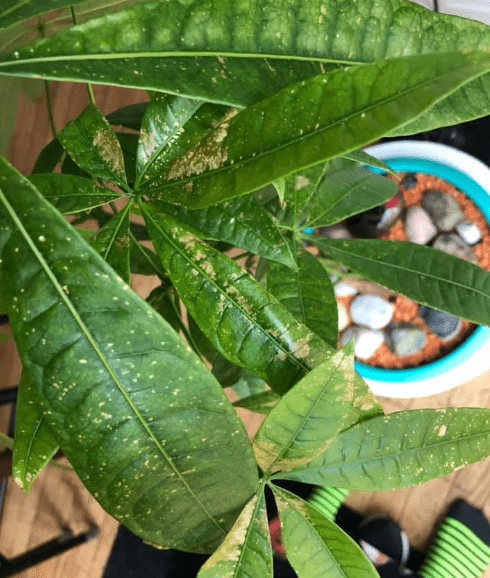
Diagnosing Yellowing Leaves
Step-by-step guide on how to identify the specific cause(s) of yellowing leaves
- Check for pests: Look for signs of pest infestation such as holes in the leaves, webs, or visible insects. Use a magnifying glass to get a closer look at the leaves.
- Inspect for diseases: Look for any signs of fungal or bacterial infections such as powdery patches, spots, or unusual growth on the leaves. Check for any discoloration or unusual texture.
- Check environmental conditions: Evaluate the temperature, humidity, and light levels in the growing area. Extreme temperatures, excessive moisture, or lack of sunlight can cause stress to the plants, leading to yellowing leaves.
- Examine the soil: Test the soil for nutrient deficiencies or pH imbalances. Yellowing leaves can be a sign of nutrient deficiency, such as nitrogen, iron, or magnesium.
- Consider watering and drainage: Overwatering or underwatering can also cause yellowing leaves. Check the moisture level of the soil and ensure proper drainage to prevent waterlogging.
By following these steps, you can identify the specific cause of yellowing leaves and take the necessary steps to address the issue, whether it’s pest control, disease management, environmental adjustments, or soil and watering modifications. Regular monitoring and prompt action are key to keeping your plants healthy and free from yellowing leaves.
Visual aids or checklist for readers to assess their own money trees
- Assess environmental conditions: Check for extreme temperatures, excessive moisture, or lack of sunlight, as these factors can cause stress to the plants and lead to yellowing leaves.
- Examine the soil: Test the soil for nutrient deficiencies or pH imbalances, as yellowing leaves can be a sign of nutrient deficiency, such as nitrogen, iron, or magnesium.
- Consider watering and drainage: Overwatering or underwatering can also cause yellowing leaves, so check the moisture level of the soil and ensure proper drainage to prevent waterlogging.
By following these steps, you can identify the specific cause of yellowing leaves and take the necessary steps to address the issue, whether it’s pest control, disease management, environmental adjustments, or soil and watering modifications. Regular monitoring and prompt action are key to keeping your plants healthy and free from yellowing leaves.
Solutions and Remedies
Correct Watering Practices: Best practices for watering money trees to prevent yellowing
- Assess environmental conditions: Check for extreme temperatures, excessive moisture, or lack of sunlight, as these factors can cause stress to the plants and lead to yellowing leaves.
- Examine the soil: Test the soil for nutrient deficiencies or pH imbalances, as yellowing leaves can be a sign of nutrient deficiency, such as nitrogen, iron, or magnesium.
- Consider watering and drainage: Overwatering or underwatering can also cause yellowing leaves, so check the moisture level of the soil and ensure proper drainage to prevent waterlogging.
By following these steps, you can identify the specific cause of yellowing leaves and take the necessary steps to address the issue, whether it’s pest control, disease management, environmental adjustments, or soil and watering modifications. Regular monitoring and prompt action are key to keeping your plants healthy and free from yellowing leaves.
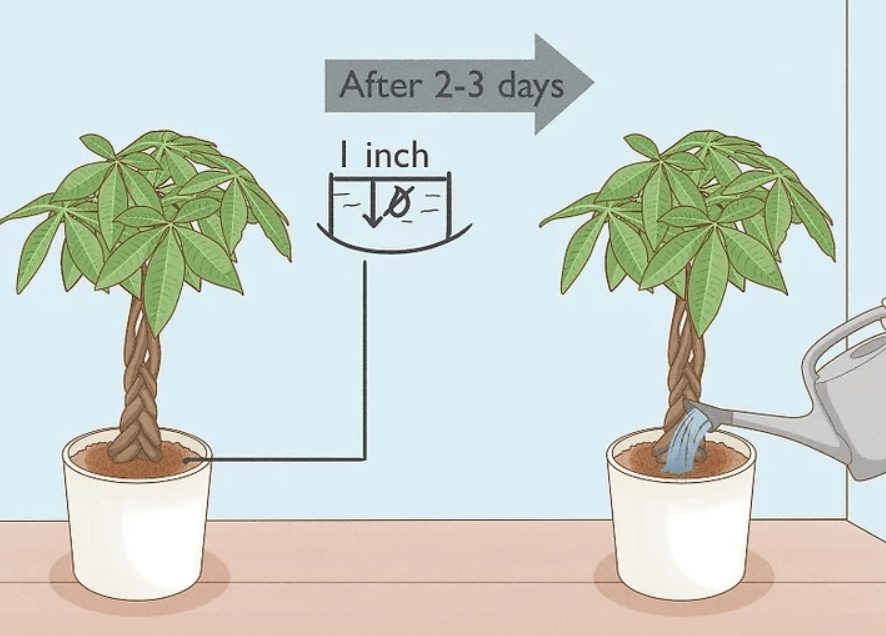
Lighting Adjustments: Optimal light conditions and how to adjust light exposure accordingly
Lighting adjustments are crucial for maintaining optimal conditions for your plants. If you notice yellowing leaves, it could be a sign that the light exposure is not suitable for your plant. Different plants have varying light requirements, so it’s important to understand the needs of your specific plant. If you notice that your plant is not getting enough light, you can adjust its position to receive more sunlight. On the other hand, if your plant is getting too much direct sunlight, you can move it to a spot with more shade. Additionally, you can consider using artificial grow lights to supplement natural light if needed. By making these adjustments, you can ensure that your plants are receiving the right amount of light to keep them healthy and vibrant.
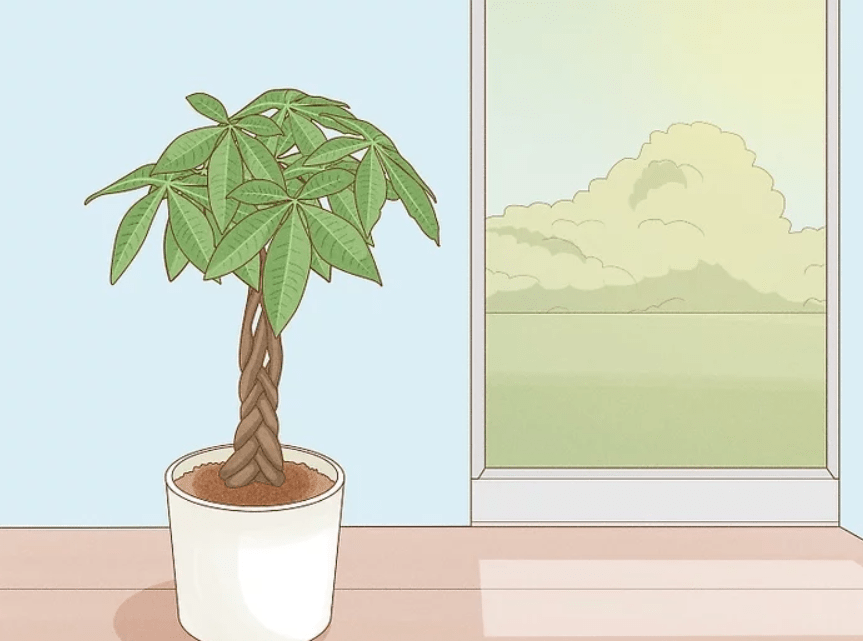
Nutrient Management: Fertilization tips and understanding the needs of money trees
Fertilization tips and understanding the needs of money trees are essential for their proper growth and health. Money trees, like all plants, require a balance of nutrients to thrive. When it comes to fertilizing your money tree, it’s important to use a balanced, water-soluble fertilizer and follow the instructions on the packaging. Over-fertilizing can damage the roots, so it’s best to err on the side of caution and use less rather than more. Understanding the specific nutrient needs of your money tree, such as nitrogen, phosphorus, and potassium, can help you to provide the right balance of fertilization. Keep in mind that different seasons may also require adjustments in fertilization, as your money tree’s needs may change. By paying attention to the signs of nutrient deficiency, such as yellow or brown leaves, you can adjust your fertilization routine to keep your money tree healthy and vibrant.
Pest and Disease Control: Effective organic methods to manage pests and diseases
in your money tree are essential for maintaining its health and vitality. One method of pest control is to regularly inspect your money tree for signs of pests such as aphids, spider mites, or scale insects. If you spot any pests, you can remove them by hand or use a gentle spray of water to dislodge them. You can also introduce natural predators, such as ladybugs or predatory mites, to keep pest populations in check. Another effective method is to use organic pesticides, such as neem oil or insecticidal soap, to control pests without harming the environment.
Disease control is also important for the health of your money tree. Proper watering and ventilation can help prevent the spread of diseases such as root rot or leaf spot. If you do notice signs of disease, such as yellowing or wilting leaves, it’s important to take action quickly to prevent the spread. Pruning away infected areas and applying organic fungicides can help manage the disease and prevent it from spreading to the rest of the plant.
By using these effective organic methods for pest and disease control, you can ensure that your money tree remains healthy and thriving. It’s important to be proactive in managing the health of your plant, and by doing so, you can enjoy a beautiful and vibrant money tree for years to come.
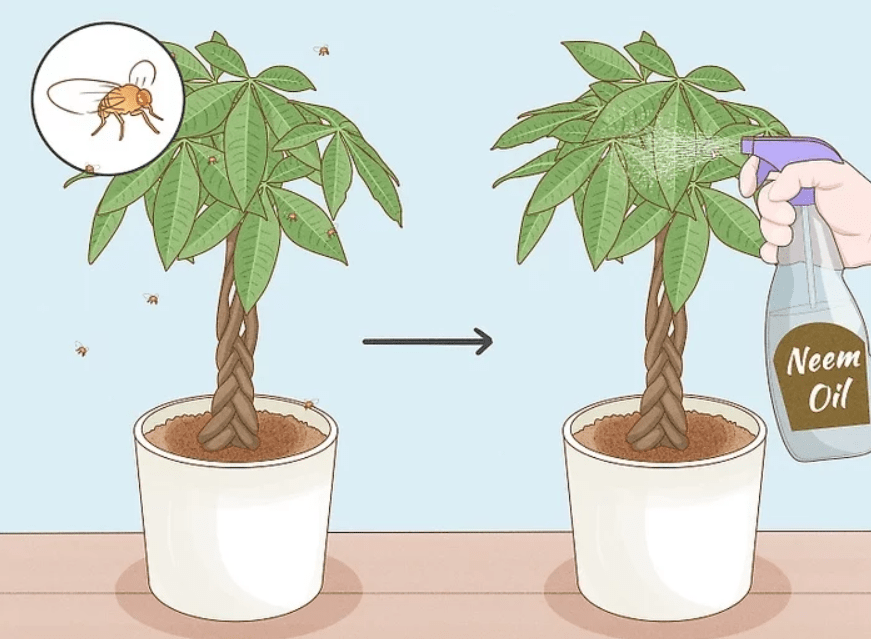
Advanced Care Techniques
Pruning techniques for removing yellowed or diseased leaves
If you notice yellowed or diseased leaves on your plant, it’s important to take action to prevent the issue from spreading. One effective method is pruning, which involves removing the affected leaves and branches to promote new growth and improve the overall health of the plant. When pruning, be sure to use clean, sharp pruning shears to make clean cuts and prevent further damage to the plant. Additionally, it’s important to sanitize your pruning tools between cuts to prevent the spread of disease. By regularly inspecting your plant and using proper pruning techniques, you can help maintain its health and vitality. Remember, prevention is key when it comes to maintaining the health of your plant.
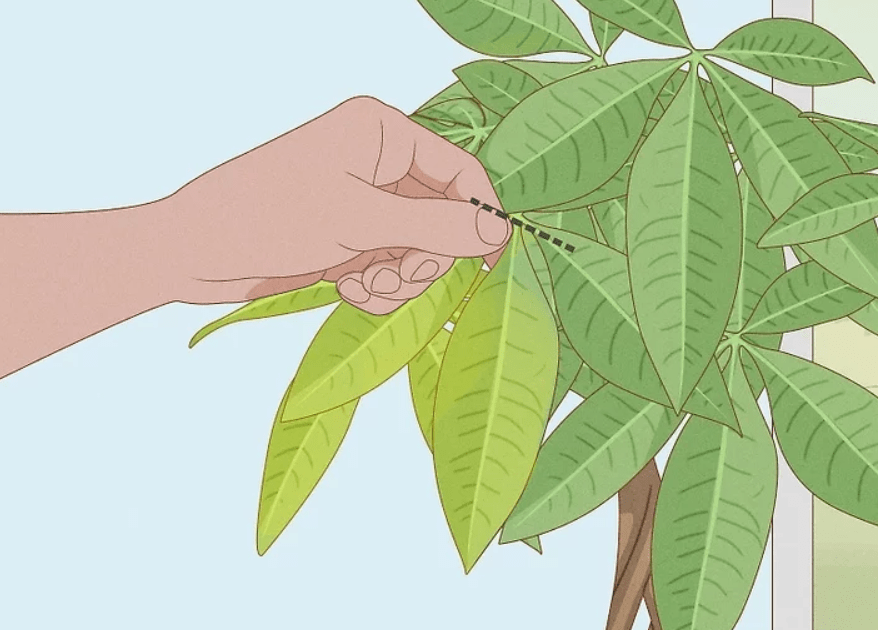
Repotting guidelines and soil considerations for improving overall plant health
Repotting your plant is an important aspect of plant care, as it allows you to refresh the soil and provide your plant with the space it needs to continue growing. When repotting your plant, be sure to choose a pot that is slightly larger than the current one to allow for root growth. Use a well-draining potting mix that is suited for your specific plant species, as this will help to prevent overwatering and root rot. When repotting, gently remove the plant from its current pot, being careful not to damage the roots. Once repotted, water the plant thoroughly and place it in a location with appropriate sunlight for its species. By following these guidelines and taking into consideration the soil needs of your plant, you can help to improve its overall health and ensure that it continues to thrive.
Preventive Measures
Long-term strategies to prevent yellowing leaves in money trees
- Proper watering: Money trees thrive in well-draining soil, so be sure not to overwater or underwater your plant. It’s important to allow the soil to dry out slightly between waterings to prevent root rot.
- Adequate sunlight: Money trees need bright, indirect sunlight to stay healthy. Be sure to place your plant in a location where it can receive enough light throughout the day.
- Humidity: Money trees prefer a humid environment, so consider using a humidifier or placing a tray of water near the plant to increase humidity levels.
- Fertilization: Use a balanced, water-soluble fertilizer to feed your money tree every few weeks during the growing season. This will provide the plant with the nutrients it needs to stay healthy and vibrant.
- Pruning: Regularly prune your money tree to remove any yellowing or dead leaves, as well as to promote new growth. This will help prevent the spread of disease and maintain the overall health of the plant.
By implementing these long-term strategies and staying attentive to your money tree’s needs, you can help prevent yellowing leaves and ensure that your plant remains healthy and flourishing for years to come.
Routine maintenance practices for ongoing plant health
Are essential to ensure that your plant remains healthy and vibrant. One important aspect of plant care is ensuring that your plant receives adequate light. Be sure to place your plant in a location where it can receive enough light throughout the day to support its growth and development.
In addition, consider the humidity levels in your plant’s environment. Money trees prefer a humid environment, so using a humidifier or placing a tray of water near the plant can help to increase humidity levels and promote the plant’s health.
Fertilization is another important aspect of ongoing plant care. Using a balanced, water-soluble fertilizer to feed your money tree every few weeks during the growing season can provide the plant with the necessary nutrients to stay healthy and vibrant.
Regular pruning is also essential for maintaining the overall health of your plant. By regularly pruning your money tree to remove any yellowing or dead leaves, as well as to promote new growth, you can prevent the spread of disease and maintain the plant’s health.
By implementing these long-term strategies and staying attentive to your money tree’s needs, you can help prevent yellowing leaves and ensure that your plant remains healthy and flourishing for years to come.
Case Studies or Expert Tips
Real-life examples or expert insights on diagnosing and treating yellowing leaves in money trees
yellowing leaves in money trees can provide valuable guidance for plant care. For example, if you notice money tree leaves turning yellow, it could be a sign of overwatering or underwatering. It’s important to assess the soil moisture and adjust your watering routine accordingly. Consulting with a horticulturist or plant expert can also provide personalized advice for diagnosing and treating money tree leaves turning yellow. They may recommend adjusting the lighting, temperature, and humidity levels to create a more suitable environment for the plant. Additionally, they may suggest using specific fertilizers or implementing pruning techniques to address the issue. By considering real-life examples and seeking expert insights, you can gain valuable knowledge for maintaining the health and vitality of your money tree.
In conclusion, yellowing leaves on a money tree can be caused by a variety of factors, including overwatering, underwatering, inadequate light, or pests. To care for your money tree and prevent yellowing leaves, make sure to water it properly, provide it with adequate sunlight, and regularly inspect for pests. By following these care tips, you can keep your money tree healthy and vibrant. If you notice any issues with your money tree, it’s important to address them promptly to ensure the overall health and longevity of the plant.
Frequently asked questions And Answer
Yellowing leaves on a money tree can be caused by overwatering, underwatering, inadequate light, or pest infestations.
To fix yellowing leaves, adjust your watering schedule, ensure proper lighting, and check for pests. Trim any yellowed or damaged leaves to promote new growth.
Money trees thrive in bright, indirect light and prefer to dry out between waterings. Use well-draining soil and avoid over-fertilizing. Regularly inspect your plant for pests and provide proper humidity levels.
In some cases, yellowing leaves can be saved by addressing the underlying issue and providing proper care. However, severely damaged leaves may need to be removed to promote overall plant health.
